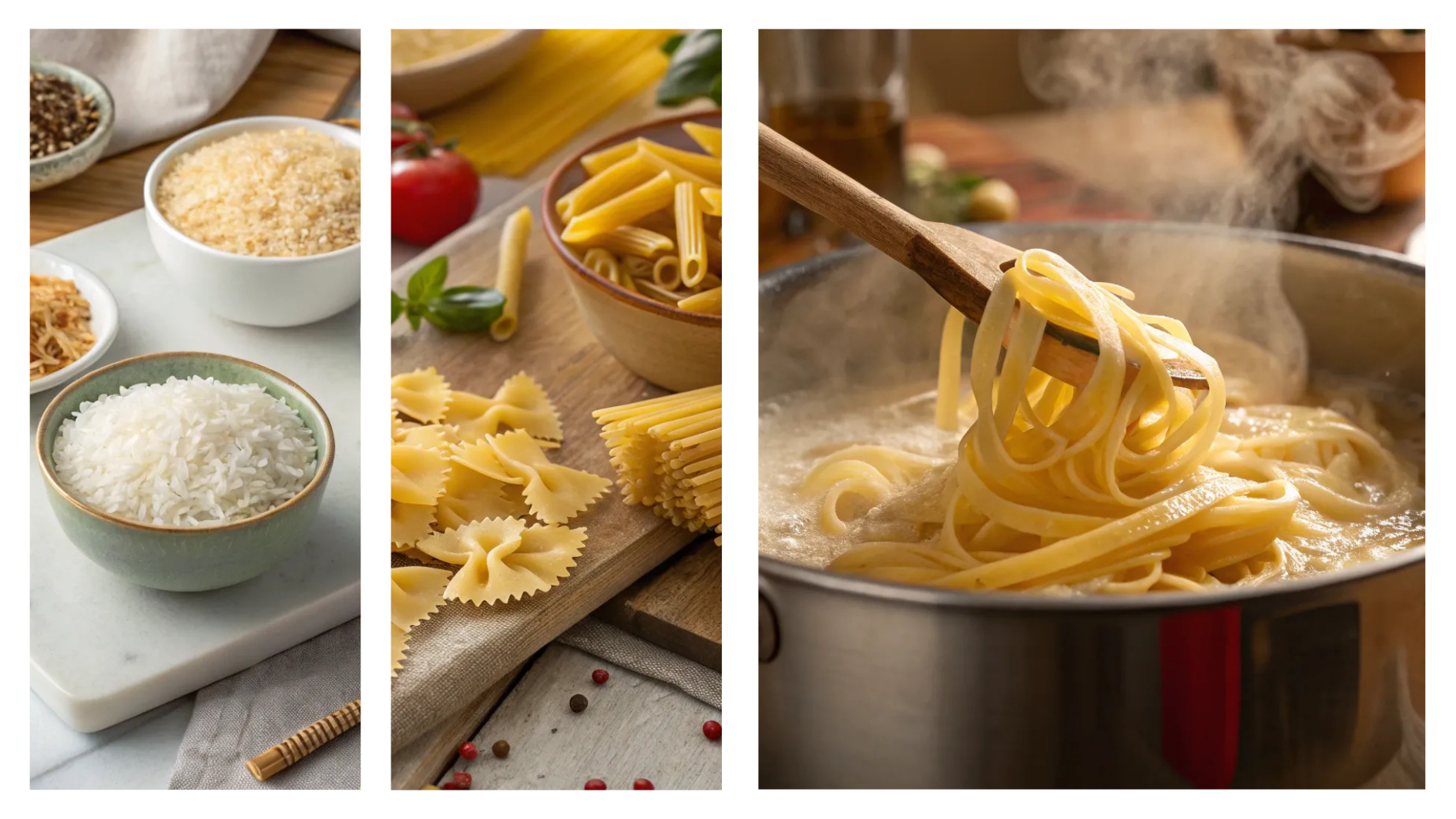How to cook rice pasta and grains may seem simple, but achieving perfect results every time requires a little know-how. Whether you’re aiming for fluffy rice, al dente pasta, or tender quinoa, mastering a few essential techniques is key to elevating your meals. In this beginner-friendly guide, you’ll learn how to cook rice, pasta, and grains consistently, confidently, and deliciously!
If you’re just getting started in the kitchen or looking to polish your skills, explore our Level Up Your Cooking collection, packed with beginner-friendly guides, essential techniques, and simple recipes to help you cook with confidence.
How to Cook Perfect Rice
Rice is a comforting, versatile staple eaten in every corner of the world, from fluffy pilafs to creamy risottos and sticky sushi. However, cooking rice perfectly can feel tricky at first: undercooked rice is unpleasantly crunchy, while overcooked rice becomes mushy or gluey. Mastering a few basic techniques will guarantee light, flavorful rice every time. Let’s start by understanding the different types of rice and how they behave:
1. Long-Grain Rice (e.g., basmati, jasmine):
Long, slender grains that cook up fluffy and separate. Perfect for pilafs, stir-fries, and as a simple side. Their low starch content helps prevent sticking.
2. Medium-Grain Rice (e.g., arborio):
Shorter and plumper grains that release more starch, making the cooked rice slightly creamy and tender. Best for risotto, paella, and pudding-like recipes.
3. Short-Grain Rice (e.g., sushi rice):
Almost round grains that stick together when cooked, resulting in a chewy, dense texture. Essential for sushi, rice balls, and traditional Asian dishes.
By knowing which type of rice you’re using, and adjusting water ratios and cooking techniques accordingly, you can make sure every pot of rice turns out just the way you want it: fluffy, creamy, or sticky depending on the dish!
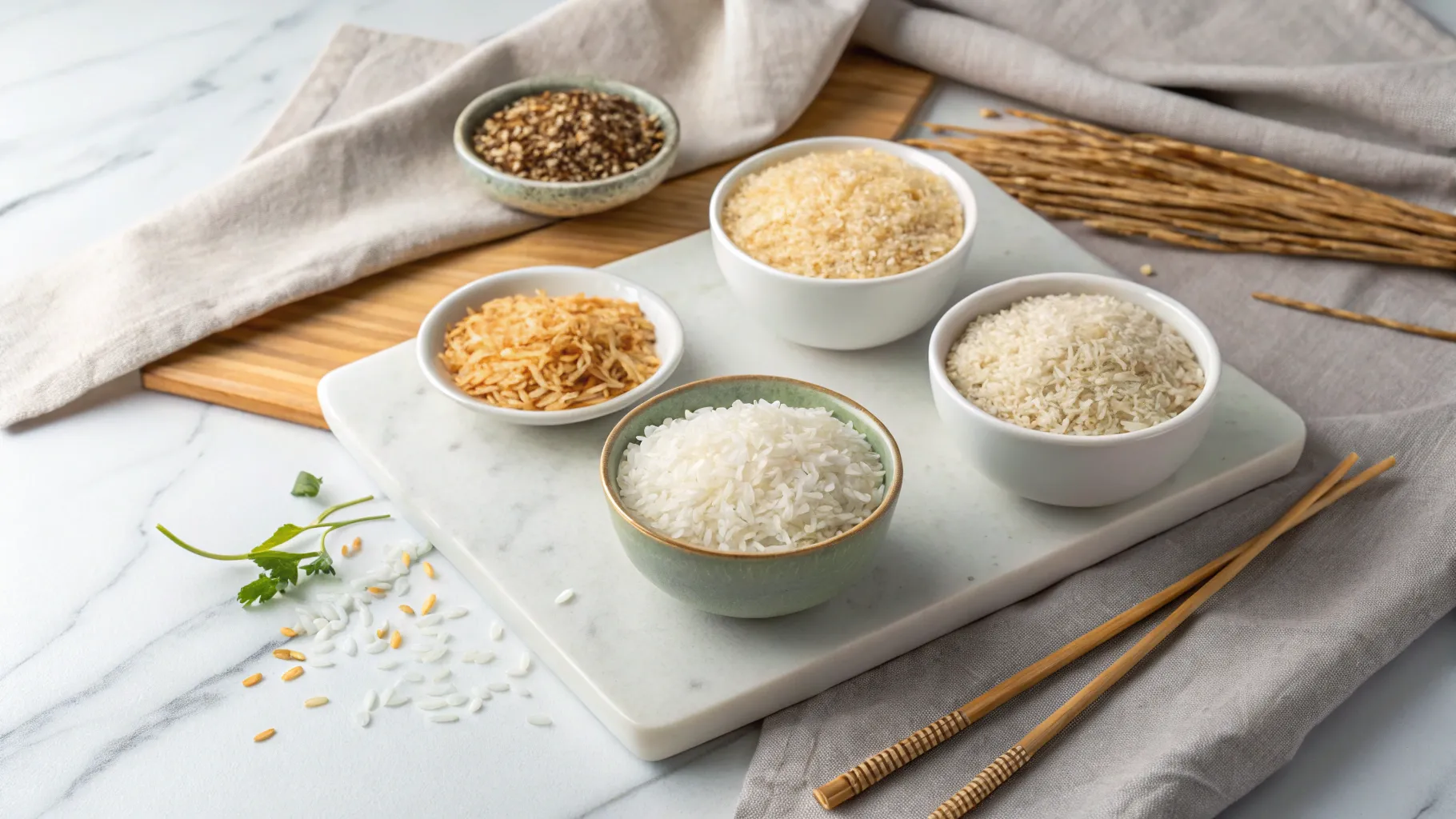
Basic Stovetop Method:
- Rinse the Rice: Place in a fine-mesh strainer and rinse under cold water until water runs clear. Removes excess starch.
- Use the Right Ratio: Typically 1 cup rice to 2 cups water (check package for variations).
- Boil and Simmer: Bring to a boil, cover with a tight lid, reduce to low heat, and simmer without lifting the lid.
- Timing: White rice: 15–18 minutes, Brown rice: 35–45 minutes.
- Let it Rest: Turn off heat and let rice sit covered for 5–10 minutes to finish steaming.
- Fluff with a Fork: Gently separate grains before serving.
💡 Pro tip: If you want even easier rice, try a rice cooker or Instant Pot, they make it almost foolproof!
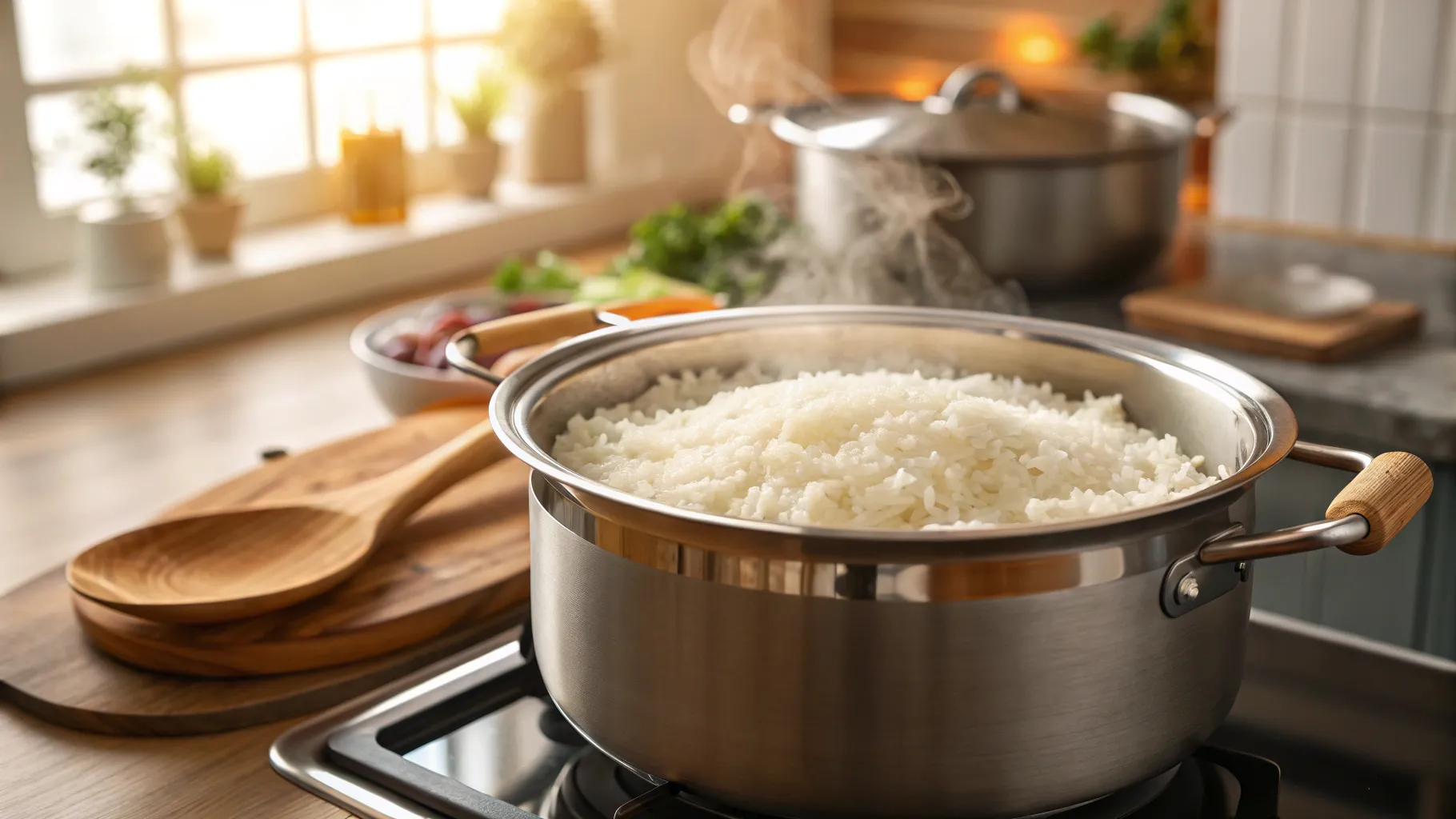
How to Cook Perfect Pasta
Pasta might seem like one of the easiest foods to cook, but achieving that perfect al dente texture, not too firm, not too soft, requires a few simple yet crucial steps. When cooked properly, pasta holds its shape, absorbs sauces beautifully, and creates truly memorable dishes.
Mastering the right techniques and ratios makes all the difference, whether you’re serving a cozy meal like our Tuna Noodle Casserole or whipping up a vibrant Green Garlicky Pesto Pasta.
1. Choosing Your Pasta
Choosing the right pasta shape makes a difference in your final dish:
- Long Noodles: Spaghetti, linguine, fettuccine, best for thinner or oil-based sauces like marinara, pesto, or aglio e olio.
- Short Shapes: Penne, rigatoni, farfalle, fusilli, perfect for chunkier sauces, baked dishes, and pasta salads because the sauce clings to their curves and ridges.
Each shape holds sauce differently, so matching pasta type to sauce is part of mastering pasta cooking!
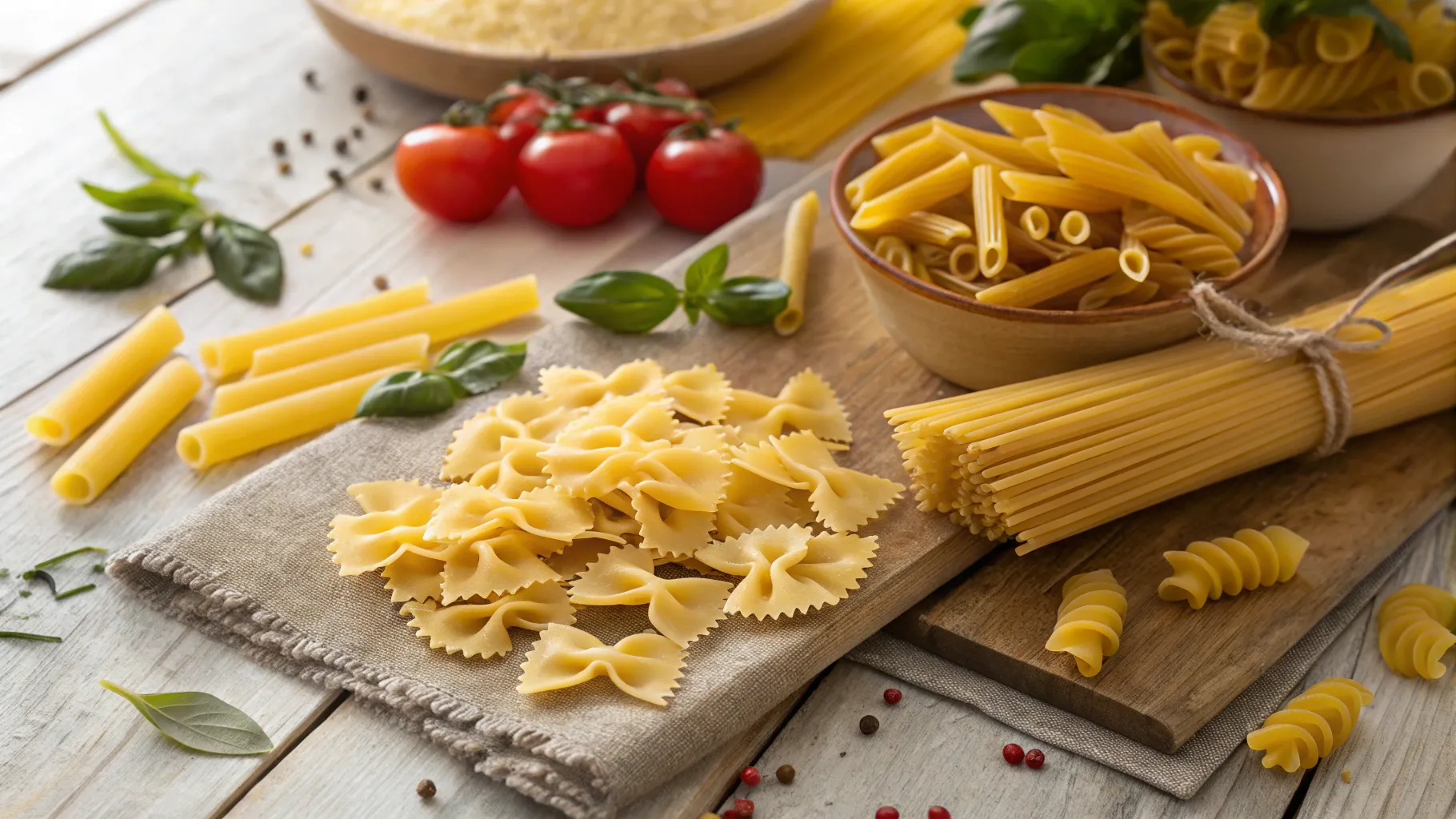
2. The Perfect Pasta Method
🟤Use Plenty of Water: Always cook pasta in a large pot with 4–6 quarts of water per pound of pasta. This prevents sticking and allows the pasta room to move freely as it cooks.
🟤 Salt the Water Generously: Add 1–2 tablespoons of salt once the water boils. The water should taste “like the sea.”
Why? It’s your only real chance to flavor the pasta itself!
🟤Boil Before Adding Pasta: Never add pasta to cold or lukewarm water. Wait until the water reaches a rolling boil to ensure even cooking and better texture.
🟤Stir Often: During the first couple of minutes, stir frequently to keep pasta from clumping or sticking to the pot.
🟤Mind the Cooking Time: Follow the package’s suggested time as a rough guide, but start tasting one minute before it’s done. You want it al dente, cooked through but still with a slight firmness in the center.
🟤Reserve Pasta Water: Before draining, scoop out about a cup of the starchy pasta water. This liquid gold can loosen sauces and help them cling better to the pasta.
🟤Drain, Don’t Rinse: Unless you’re making a cold pasta salad, never rinse pasta after draining. The natural starches on the surface help sauces stick and create a silky, cohesive dish.
3. Pro Tip for Extra Flavor
Toss hot pasta directly with your sauce immediately after draining, ideally while both are still hot. Pasta absorbs flavors better this way, resulting in a more flavorful, restaurant-quality dish.
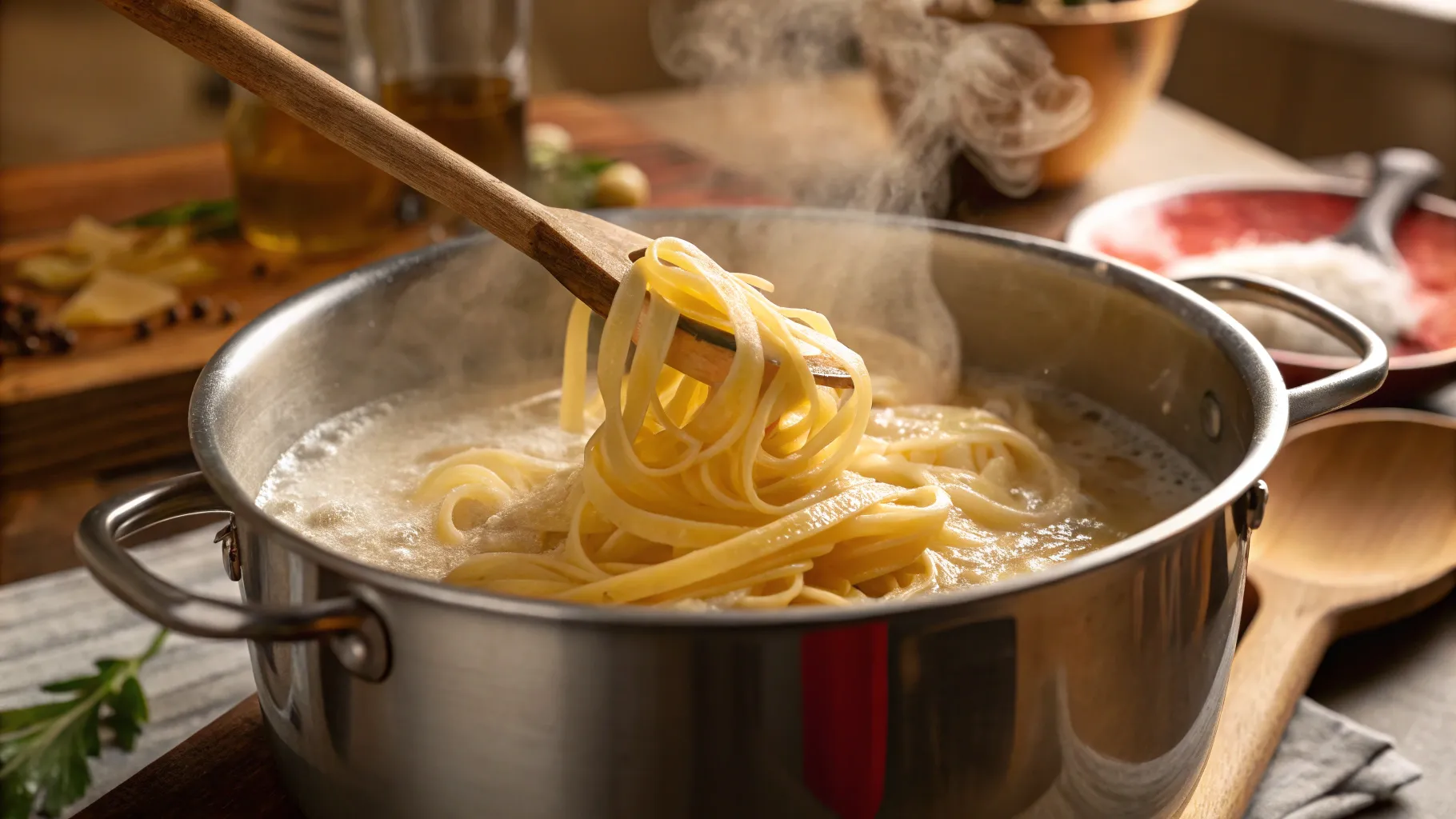
How to Cook Grains (Quinoa, Couscous, Farro, Bulgur)
Grains are the unsung heroes of a healthy and hearty kitchen. They add texture, fiber, and nutrition to your meals, and they’re incredibly versatile, great for salads, bowls, soups, and side dishes. However, each grain type cooks a little differently, so knowing the basics is key to getting them perfectly tender (never mushy or undercooked).
Here’s a closer look at common grains and exactly how to cook them:
1. Quinoa
Quinoa is a protein-packed “pseudo-grain” that cooks quickly and offers a slightly nutty flavor.
Steps for Perfect Quinoa:
- Rinse thoroughly before cooking to remove its natural bitter coating (saponins).
- Ratio: 1 cup quinoa to 2 cups water.
- Simmer: Bring to a boil, cover, reduce heat to low, and simmer for 15 minutes until all water is absorbed.
- Rest: Remove from heat and let it stand covered for 5 minutes, then fluff with a fork.
💡 Pro tip: Toast rinsed quinoa in a dry pan for 2–3 minutes before adding water for a deeper, nuttier flavor.
2. Couscous
Couscous is a quick-cooking grain (technically a type of pasta) that’s perfect for speedy meals.
Steps for Perfect Couscous:
- Ratio: 1 cup couscous to 1¼ cups boiling water (or broth for extra flavor).
- Steep: Pour boiling liquid over the couscous, cover, and let it sit undisturbed for 5 minutes.
- Fluff: Gently fluff with a fork before serving to separate the grains.
💡 Pro tip: Stir a splash of olive oil or a pat of butter into the hot couscous for extra richness.
3. Farro
Farro is a hearty, nutty-tasting ancient grain perfect for grain bowls and hearty salads.
Steps for Perfect Farro:
- Pre-soak whole farro for a few hours if you want faster cooking (pearled farro doesn’t require soaking).
- Ratio: 1 cup farro to 2½–3 cups water or broth.
- Simmer: Bring to a boil, then reduce heat and simmer gently for 20–30 minutes until chewy-tender.
- Drain: Drain off any excess water, like pasta.
💡 Pro tip: Add aromatics like a bay leaf or smashed garlic clove to the water for added flavor while cooking.
4. Bulgur
Bulgur is precooked, cracked wheat, making it one of the fastest grains to prepare.
Steps for Perfect Bulgur:
- Ratio: 1 cup bulgur to 2 cups boiling water.
- Steep: Combine bulgur and boiling water, cover, and let soak for 10–15 minutes until tender.
- Drain if needed, then fluff with a fork.
💡 Pro tip: Use fine bulgur for tabbouleh or quick salads, and medium or coarse bulgur for pilafs or warm dishes.
Pro Flavor Boost
Swap water for broth when cooking any grains to add instant depth and savoriness without any extra work. You can also toss cooked grains with fresh herbs, lemon zest, or a drizzle of olive oil for extra brightness.
Learning how to cook grains perfectly opens up a world of fast, healthy, satisfying meals, from quinoa breakfast bowls to farro-studded salads.
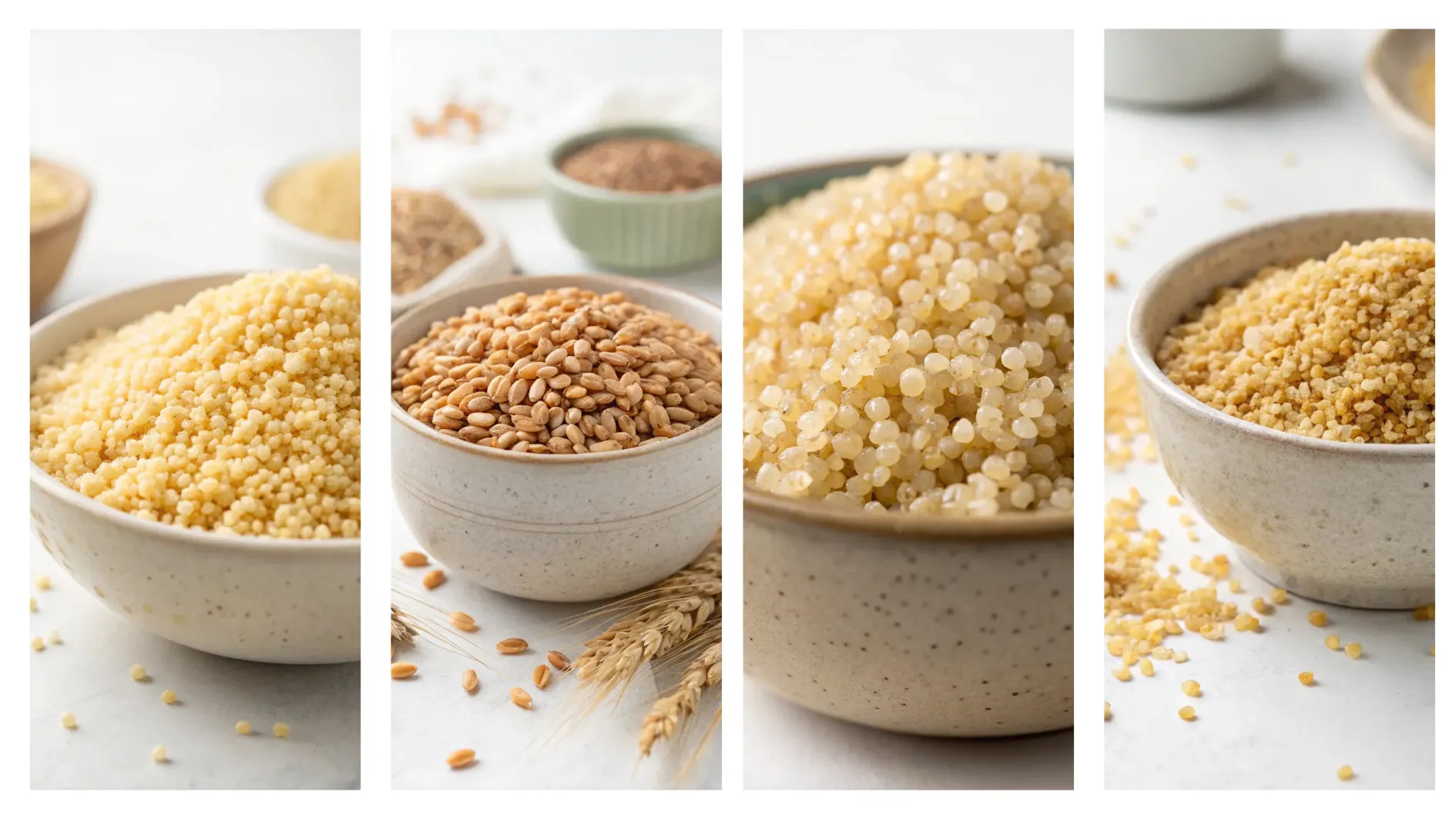
Bonus Tips for Success
- Use a tight-fitting lid when simmering rice or grains to trap steam.
- Don’t peek while simmering rice, steam escapes and ruins texture.
- Taste as you go when cooking pasta or grains to catch the perfect doneness.
- Use timers to avoid overcooking, guesswork often leads to mushy results.
FAQs About Cooking Rice, Pasta, and Grains
Q1: Can I freeze cooked rice, pasta, or grains?
A: Absolutely! Cool completely, then freeze in airtight bags for easy meal prep.
Q2: How do I avoid sticky rice?
A: Rinse thoroughly before cooking and avoid stirring during simmering.
Q3: How can I make pasta more flavorful?
A: Cook pasta in salted water and finish it directly in the sauce with a splash of pasta water.
Q4: What’s the healthiest grain option?
A: Quinoa, brown rice, farro, and bulgur are all nutrient-dense choices packed with fiber and protein.
Q5: Is it better to cook grains with broth?
A: Yes! Cooking in broth adds extra flavor without extra effort.
Final Thoughts
Perfect rice, pasta, and grains don’t require fancy skills, just a little attention to detail. Once you master the basics, you can mix and match flavors, sauces, and seasonings to create endless meals. Whether you’re prepping fluffy quinoa bowls, al dente pasta dishes, or tender rice stir-fries, knowing these foundational techniques will make you a more confident and efficient home cook.

